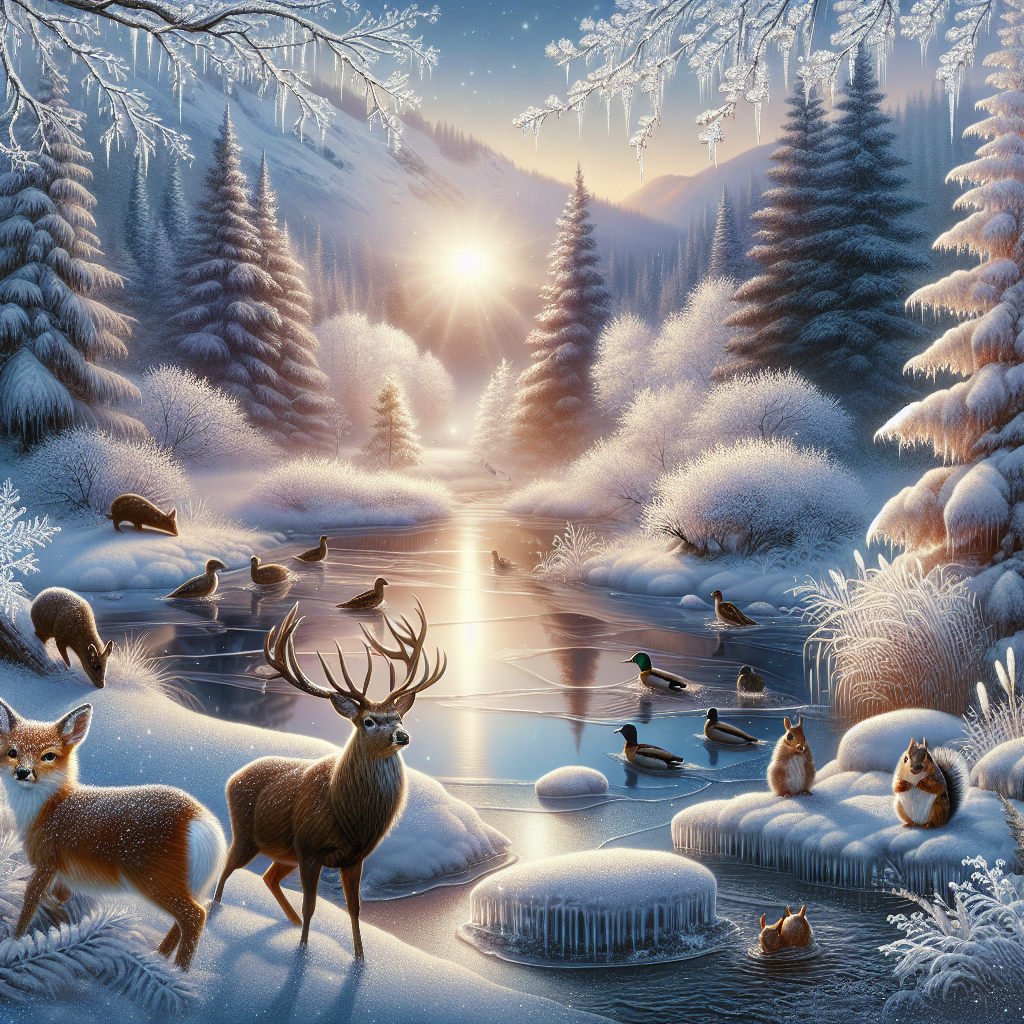Title: Winter Wildlife Wonders: Magical Encounters with Animals in the Snow in Oregon
Introduction:
When the first snowflakes hit the ground in the Beaver State, it’s not only the landscape that transforms. Indeed, when winter sets in, Oregon’s wildlife takes center stage. It’s a time when the state’s diverse fauna can be spotted against the snowy backdrop, offering up an adventurous wildlife watching experience. Here’s how you, too, can join in this magical pastime.
Preparation:
Before heading out into the chilly embrace, it’s crucial to be prepared. Oregonian winter can be a fickle friend: sunny and mild one day, snowy and bone-chilling the next. Keep a careful eye on the weather forecast. Pack warm clothes, but wear layers – you might be surprised how warm you can get during a day of winter hiking.
Remember, this isn’t a summer jaunt along the Oregon Coast Trail- winter in Oregon demands sturdy, waterproof footwear and moisture-wicking clothing. Always bring sturdy water bottles, as dehydration can creep up even in the cold. And a thermos of hot cocoa or apple cider never goes amiss, especially on those truly frigid winter outings.

The Snowy Sanctuaries:
Trillium Lake, encased in its icy shroud, is a paradise for birdwatchers. Nestled in Mt. Hood National Forest, a winter visit might reward you with sightings of Barred Owls, Woodpeckers, and the colorful Varied Thrush. Use your binoculars and tread lightly – the quieter you are, the better your chances of spotting some of our feathered friends.
For larger mammals, head to Mount Bachelor near Bend. In winter, Roosevelt Elk herds can often be spotted in the area, their massive forms a dramatic sight against the pure white snow. Be patient, keep your distance, and you might just be rewarded with the sight of these magnificent creatures going about their cold weather routines.
Winter Whale Watching:
A trip to Depoe Bay is a must for any experienced or aspiring cetacean enthusiasts. This coastal town, touted as the “Whale Watching Capital of the Oregon Coast,” offers unrivaled views of Gray Whales during their winter migration. If you wish to catch a glimpse of these majestic creatures, plan your visit between late December and January as they travel south. Keep an eye on the weather too – clear, calm days make for the best whale spotting conditions.
Adorable Semi-Aquatic Denizens:
Oregon isn’t just about the large and dramatic fauna. The regal river otter, a generally elusive creature, is best spotted during the colder months. The Alsea River, especially the section near the Alsea Bay Historic Interpretive Center, is prime otter-spotting territory. Often, you can watch these playful little fellows frolicking in the water or sliding down snowy riverbanks.
Last but not least, we can’t forget about the state’s favorite mascot – the industrious beaver. Winter is a great time to observe these animals as they work hard to repair and reinforce their lodges in anticipation of the melt. The Tualatin River, especially around Cook Park, is a known beaver hotspot.
Final Words:
Winter wildlife watching in Oregon is an adventure that requires patience, respect, and a desire to explore. Remember, animals deserve their space, so always prioritize their welfare over the desire for a closer look or the perfect photo. Dress warmly, stay alert, and follow the locals’ lead.
Lastly, wherever you go, embrace the magic of winter in Oregon, and let the quiet wilderness and its snowy inhabitants enchant you. Trust that Oregon’s winter creatures, from the tiniest songbird to the most massive elk, are well worth braving the winter cold. Not only will you be treated to some fantastic wildlife encounters, but you’ll also have stories to tell and memories to cherish. Until next time, happy wildlife watching, friends, and always keep Oregon wild.
Final Word Count: 604
